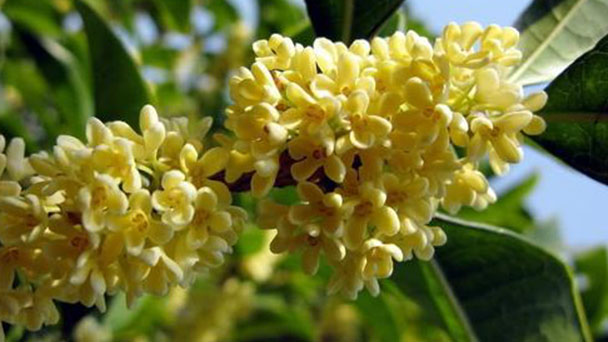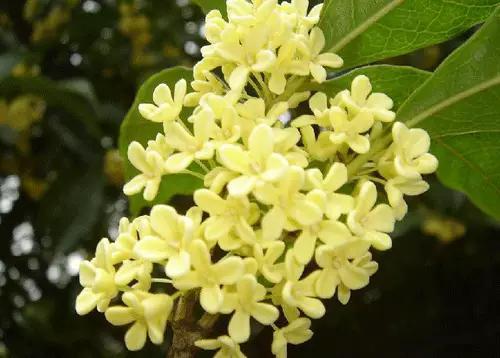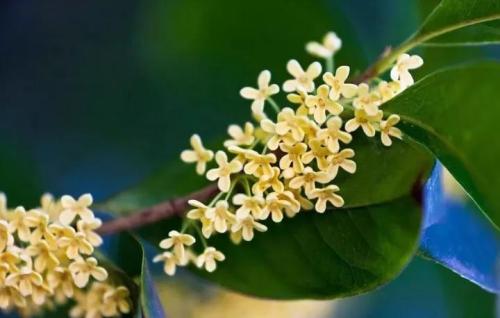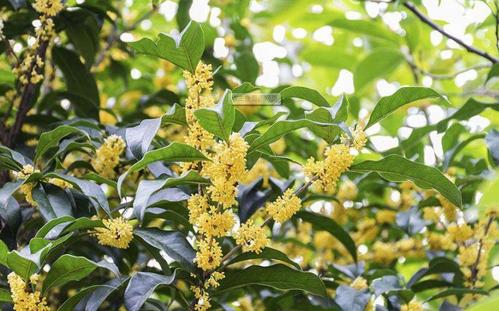How to Propagate Sweet Osmanthus
Written by Maggie
Oct 19 2021

The propagation methods of Sweet Osmanthus include sowing, cutting, grafting, layering, and so on. Today, we will introduce the propagation methods of Sweet Osmanthus.

Sowing propagation method of Sweet Osmanthus.
In order to prevent the occurrence of seedling disease, first of all to sow matrix disinfection, each cubic meter of matrix can be used 40% formalin 400 ~ 500 milliliters of diluent evenly irrigated after sealing 24 hours, and then lift the seal, let its volatile 10 ~ 14 days can be used. Or the method of high temperature disinfection, in order to kill diseases and insect pests shall prevail, the general sterilization temperature is 72 ~ 99℃.
Indoor seedling dish to raise seedling more now. Easy to manage and handle. Spring sowing propagation is common in the north. But in a climate-controlled greenhouse, seeds can be planted all year round. After seed sowing, the substrate must be compacted to ensure that the seed and substrate are tightly bound. The water after sowing must be clean and germ free, with a pH value of about 7. Watering is usually done by soaking in the bottom of the pot, placing the sown container in the tank. The water level must be slightly below the surface of the seeding soil or seeding substrate in the container. When 1/3 of the soil surface is wet, move the seeding container out of the water tank and cover the seeding container with clean glass until the seeds germinate. In the process of seed germination, it can be kept for about 1 weeks after soaking in water. At night, the glass should be slightly opened for ventilation. After seed germination, the glass should be removed. Large-scale production of seedlings, available spray method of watering, in the seedling area to install spray devices. Whether it is a kind of watering, we should keep the substrate wet, to prevent too dry wet, especially in the rainy season but also pay attention to drainage.
After seed germination, the soil temperature should be maintained at L8-14 ℃ and the pH value of the soil should be 5-7. After the emergence of young roots, the water supply can be slightly reduced, which is favorable for root growth. After the formation of true leaves, the low-concentration fungicide dixone can be irrigated with 300 ~ 500 times solution to prevent and control diseases. The seedlings sown on the ground should leave a bed for 2 years, and the third year of transplantation is planted.
Home or small flower garden environment, in addition to the seed tray, the seed container can choose shallow seedlings, wooden box, flower pot, small nutrition bowl and other containers, substrate can choose fine sand soil, peat soil without fertilizer leaf rot soil, vermiculite, etc. In the spring, the selection of new seeds soaked in water for 24 hours, out of sowing, covered with soil about 3 cm, pouring water to keep wet, after the emergence of true leaves, every 5 ~ 20 days after topdressing 1 time, the next spring equinox.

Cutting propagation method of Sweet Osmanthus.
Cutting propagation is one of the most commonly used vegetative propagation methods in flower cultivation. At present the more advanced is the use of full light cutting technology. Sweet Osmanthus cutting propagation can be made by hard branch cutting propagation, semi-hard branch cutting propagation or bud insertion propagation.
Hard cutting propagation: selection of mature, no plant diseases and insect pests of 1 ~ 2 years in central branches, cut growth in 10 centimeters, about 3 ~ 4 section of the cuttings, cut the mouth to neighboring section, platforms, cut, cut the top 45 ° incline, to avoid water accumulation, then certain plant row spacing to insert two-thirds of cuttings in advance to sort out good breeding bed, and then watered.
Semi-hard cutting propagation is mainly growing period cuttings, take the semi-ripe top, should be with half lignification part, length of 8-10 cm, cut the lower part of the cuttings leaves, leaving only the top 2 leaves. The cuttings are inserted into 1/2 ~ 2/3 of the soil, and can also be cut with short branches and heels, and wrapped with wet cloth, so as not to affect the evaporation of water survival.
Single bud insertion propagation: in order to save materials, you can take the more mature part of the bud on the branch, with leaves, with a length of about 2 cm for cuttings, cuttings of the branch flat inserted into the matrix, the bud slightly hidden in the soil, leaves exposed soil surface.
Layering propagation method of Sweet Osmanthus
Layering propagation method is a method of keeping the branches from the mother's body, and is often used for laying flowers during the growing period when they are difficult to root. We need to to choose mature and robust close to the ground commonly 1 ~ 2 years of life branch, destroy its local cortex, the part that handles is used to pile soil to press the method of reproduction. High-altitude layering propagation should select strong branches with appropriate height, and the number of strips should not exceed L /2 of the mother plant. The layering can be treated in the following ways.
Grafting propagation method of Sweet Osmanthus
Grafting is a method of propagation in which a part of the plant to be propagated is attached to the stem or root of another plant so that the two are combined to form a single new plant. The plant body produced by grafting propagation is called "grafted seedling". The branch or bud for grafting is called "scion". The difference between grafted seedling and other vegetative propagation seedlings is that it uses the root system of another plant and the part of the root plant bearing the scion is called "rootstock". The scion made of stem and branch is called "grafting", and the scion made of bud is called "bud grafting".
Grafting propagation is an important method of seedling production in Sweet Osmanthus. In addition to the general advantages of vegetative propagation, it also has other functions that vegetative propagation can not play: maintain the excellent characteristics of plant quality, improve the ornamental value; Increases resistance and adaptability; Flowering and bearing early; To overcome the difficulty of reproduction; Enlarge the propagation coefficient; Restore tree potential, cure trauma, supplement deficient branch, renew variety.

Read Next:
How to Grow & Care for Sweet Osmanthus
Sweet Osmanthus Profile
Latest Updated
- Benefits of Bugleweed - 7 Science-backed Health Benefits
- Bugleweed Dangers & Side Effects - Is It Poisonous?
- How to Plant Evergreen Trees - What You Should Know
- When to Plant Evergreens - Grow Guide for Evergreen Trees
- 12 Wonderful Evergreen Shrubs for Your Garden
- 12 Popular Evergreen Plants with Pictures for Beginners
- When And How To Prune A Lilac Bush Like a Pro
- How to Grow & Care for Lilac Vine (Hardenbergia Violacea)
- Japanese Lilac Tree (Syringa Reticulata) Care & Propagation Guide
- Shumard Oak Pros and Cons - What to Know
Popular Articles
- Winter maintenance of Antirrhinum Majus
- How to Grow Terminalia Mantaly Tree
- How to Grow and Care for Crossostephium Chinense
- How to grow Antirrhinum Majus in spring
- Peristeria Elata (Dove Orchid) Profile: Info & Care Guide
- Underwatered Snake Plant (Sansevieria Trifasciata) - Signs And How To Fix
- How to Care for Brazilian Jasmine Plant (Mandevilla Sanderi)
- How to Grow & Care for Graptopetalum Purple Delight in Summer
- Rosa Chinensis (China Rose): Plant Growing & Care Tips
- How to Care for Baby Sun Rose (Aptenia Cordifolia)